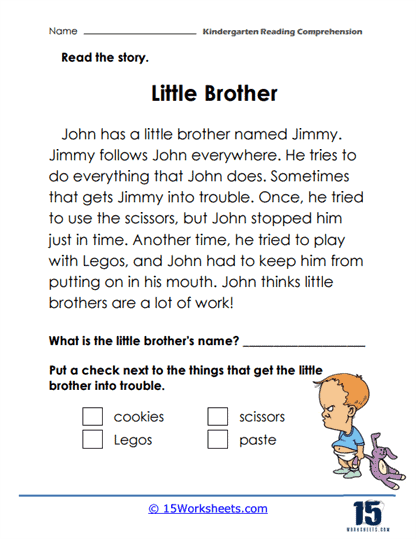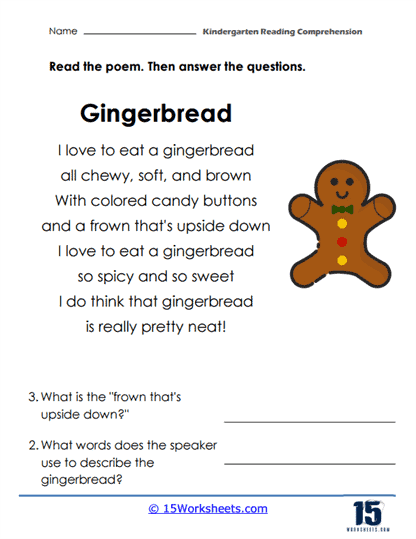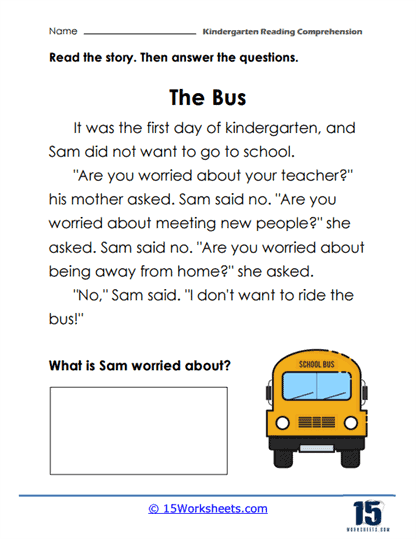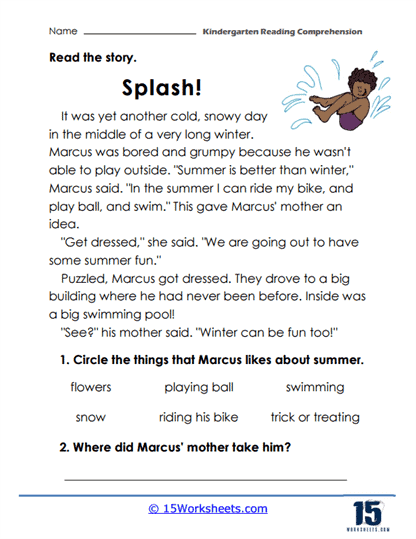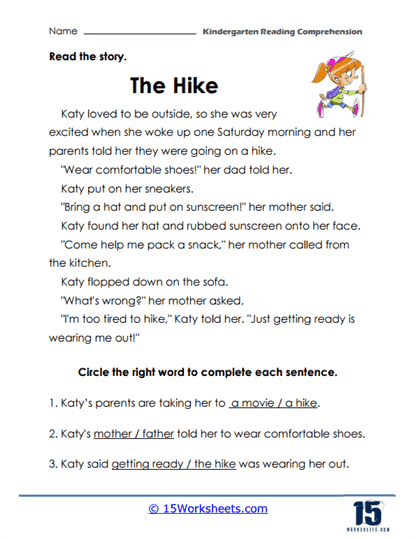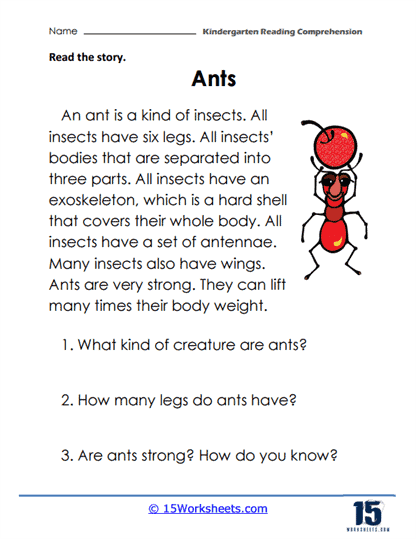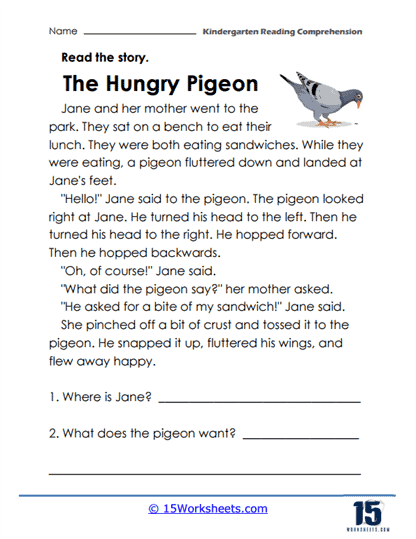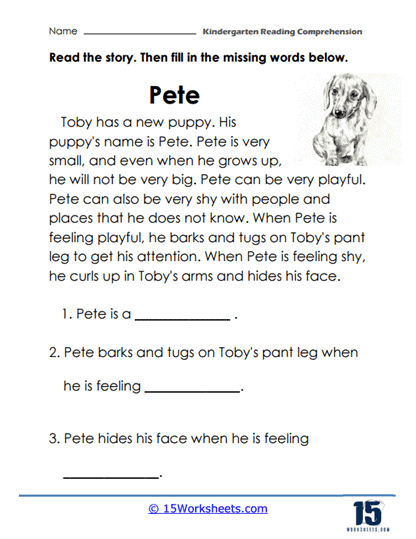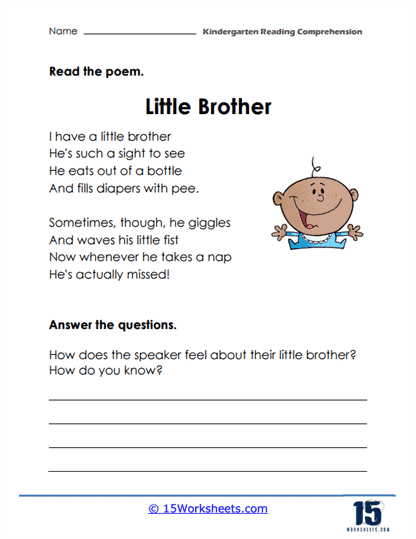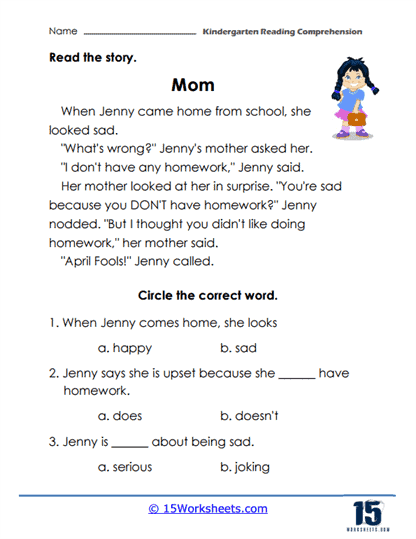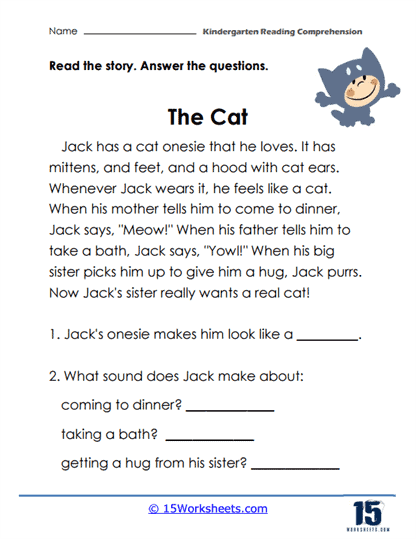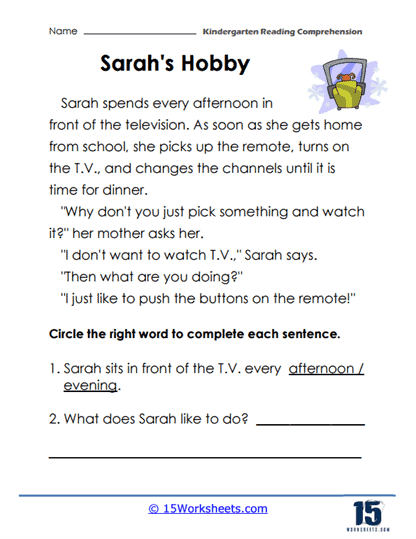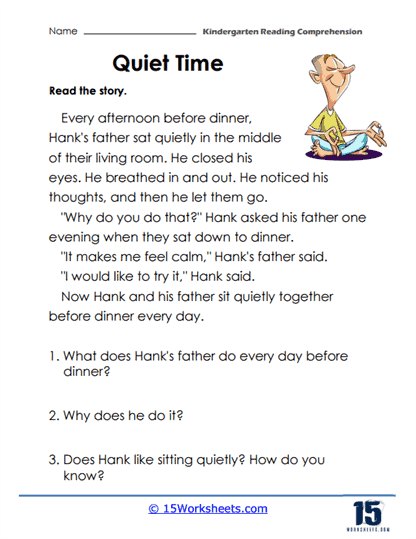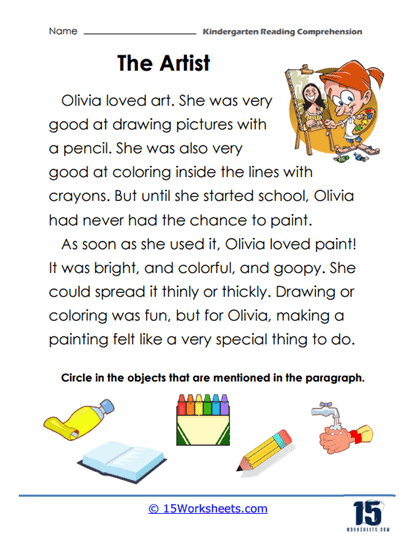Kindergarten Reading Comprehension Worksheets
All About These 15 Worksheets
This series of 15 worksheets is designed to develop essential reading comprehension skills, promote language development, and foster a love for reading for Kindergarten students. Through this collection, students will engage in a variety of reading passages followed by comprehension questions that are suitable for their developmental level. These worksheets provide opportunities for hands-on exploration, critical thinking, and vocabulary development. By participating in these activities, students will strengthen their ability to understand and interpret text, enhance their comprehension skills, and build a solid foundation for future literacy development. Through these worksheets, students will:
- Reinforce their vocabulary and reading comprehension;
- Develop their critical thinking skills by looking for context clues in the reading passages to figure out the answers to the questions;
- Answer questions beginning with who, what, when, where, why, or how, developing comprehension skills and recall;
- And determine the objects mentioned in the passage by circling the pictures that match, honing their visual perception.
Through this engaging series of Kindergarten Reading Comprehension worksheets, young learners will embark on a journey of literacy development and critical thinking. By participating in activities that involve reading passages followed by comprehension questions, students will strengthen their ability to understand and interpret text, develop vocabulary, and build comprehension skills.
By engaging with these exercises, students will develop a foundation for effective reading comprehension, enhance their literacy skills, and foster a lifelong love for reading. Ultimately, this collection serves as a stepping stone for building strong reading comprehension skills, nurturing a passion for literacy, and setting the stage for future academic success.
How to Improve Kindergarten Reading Comprehension
Improving reading comprehension in kindergarten is crucial, as it lays the foundation for future reading success. Here are some strategies and activities to help kindergarten students develop their reading comprehension skills:
- Develop Phonemic Awareness – Help students recognize individual sounds in words through activities such as rhyming, alliteration, and segmenting sounds. This builds a strong foundation for decoding and understanding written text.
- Teach Phonics – Introduce letter-sound relationships and help students learn to decode words by blending sounds together. This helps them recognize and read words, which is essential for comprehension.
- Build Vocabulary – Expose students to a variety of texts and engage in discussions to introduce new words and their meanings. Use visual aids, real-life objects, and gestures to reinforce vocabulary understanding.
- Read Aloud – Regularly read stories aloud to your students, modeling expression and fluency. This helps them develop listening comprehension skills and exposes them to various text structures, themes, and vocabulary.
- Encourage Independent Reading – Provide ample opportunities for students to practice reading independently or with a partner. Choose level-appropriate books that are engaging and interesting to the students.
- Ask Questions – While reading together, pause to ask questions about the story. Start with simple recall questions and gradually move on to more complex inferential questions. Encourage students to ask their own questions as well.
- Make Predictions – Before and during reading, ask students to predict what might happen next in the story. This encourages active engagement with the text and helps develop higher-order thinking skills.
- Use Graphic Organizers – Teach students to use simple graphic organizers, such as story maps or Venn diagrams, to help them visualize and organize the information they’re reading.
- Retell Stories – After reading, encourage students to retell the story in their own words. This helps reinforce their understanding of the story and allows them to practice sequencing events.
- Connect to Personal Experiences – Encourage students to make connections between the story and their own experiences. This helps them relate to the text and promotes a deeper understanding of the content.
- Teach Comprehension Strategies – Introduce and practice strategies such as visualizing, summarizing, and making inferences. Explicitly teaching these strategies helps students become more active and purposeful readers.
- Monitor Progress – Regularly assess students’ reading comprehension skills to identify areas of strength and areas that need improvement. Provide targeted support and practice to help students progress.
By implementing these strategies and activities in your kindergarten classroom, you can help students develop strong reading comprehension skills that will serve as a solid foundation for their future academic success.


